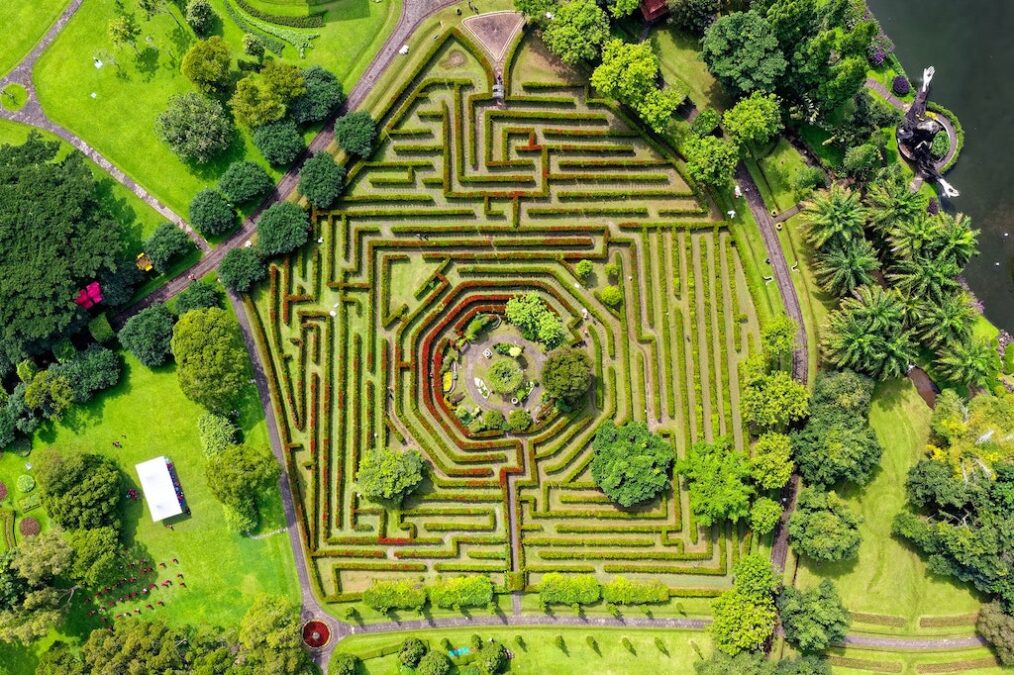
Finding and falling in love with your idea: The guide to “the one” and beyond
Note: this blog is a slightly revised version of an assignment handed in for the master course ‘Creativity and Innovation in Organizations’.
Entrepreneurship is like a romantic novel. You start commitment-free, you observe the market, you begin flirting with business books and investment guides, but you know you would not want to spend the rest of your life with them. What you need is someone to inspire you, to help you grow and give you a reason to wake up in the morning – a creative idea – the one that will be there for you in sickness and in health. If you are still dreaming about “the one”, this article can help your dream become true.
Her High Standards
I will let you in on a secret: she has high standards, and you will need to work hard to find her. As Amabile (1983) suggests in her Componential Model of Creativity, finding the idea requires the mastery of three competencies. First, you must have enough domain-relevant skills, i.e. factual knowledge and problem-solving skills. These can mainly be achieved through formal/informal education. Second, you must foster creativity-relevant skills such as the ability to explore new solutions, to think globally, and to keep doors open for as long as possible. Third, the author emphasizes the necessity of task motivation, i.e. the “why” behind your creative endeavors.
She has high standards, and you will need to work hard to find her.
To illustrate, suppose you wish to develop an app that would provide certain services. However, you are also aware about the incredible number of similar apps already out there. How can you make yours unique? First, you will need to investigate your product from all possible perspectives such as design, technology, investments, and marketing. This can be done by taking formal courses in creative entrepreneurship, business development, or by outsourcing to field experts who can provide you with the required domain-knowledge. Second, you need to expand your horizons, think counterintuitively, or as Gordon (1961) put it: “make the familiar strange”. For this you might want to assess your competitors, try to find what they are missing and explore new alternatives that can be used to your advantage. Third, you need to ask yourself: “Why am I pursuing this?” Finding the “why” behind your creative endeavors will help you endure difficulties throughout the development process, try things out, and persevere.
Clearly, generating creative ideas in order to find your best idea is a challenging venture, but once you have acquired necessary skills and answered the essential questions, you may have all the ingredients to succeed at a first date with your ideas and get closer to finding “the one”.
Her Complex Personality
Alas, she is not easy to find. As Litchfield et al. (2015) argue, creative ideas are exceptional and rare in that they are both novel and useful. The novelty of an idea relates to its uncommonness in comparison to other existing ideas or its distance from what is usually practiced. The usefulness of an idea, however, comprises two other characteristics: feasibility and value. While feasibility regards the practicality of an idea, i.e. how likely it is to be implemented, value refers to the subjective evaluation of an idea’s worth. In a nutshell, a creative idea is subjectively different from the usual practice, but it’s also subjectively realistic and worth pursuing (Litchfield et al., 2015).
Even though you may be acquainted with her main characteristics, beware: you may not like her at first glance.
However, it seems that, although we know what a creative idea looks like, the very best ideas are still difficult to recognize. In fact, even though you may be acquainted with her main characteristics, beware: you may not like her at first glance. Interestingly, people who dislike uncertainty are more likely to reject novel ideas, because of the inherent risks attached to them (Mueller et al., 2012). Therefore, as much as you desire creative ideas, maybe you, like many others, hesitate when it comes to choosing a novel one. This means that you could miss out on “the one”! Luckily, there are some ways that can increase the accuracy of recognizing creative ideas and consequently counteract the bias against idea novelty.
While it seems that fulfilling both criteria of creative ideas is a difficult endeavor, construal levels can increase the accuracy of creative idea recognition. For example, Mueller et al. (2014) investigated how construal level affected creativity ratings in a series of three experiments. They found that participants with a focus on “why” questions (as compared to a focus on “how” questions) were better at recognizing creative ideas. Similarly, Förster et al. (2004) found that a focus on the distant future increased creative problem solving and creative generation, compared to a focus on the near future. Thus, targeting the why behind your ideas and envisioning your ideas in a distant future, may help you to accurately recognize creative ideas and potentially find “the one”.
Her Charisma in Social Settings
Let us say, you have found her but you still need to refine her a bit. She’s fantastic, but perhaps not perfect yet. What better way is there to polish her than by taking her to meet your relatives and friends? As Perry-Smith and Mannucci (2017) argue, other individuals can facilitate creativity, but that depends on the innovation phase and the relationship between the creator and others. For instance, you may want others’ opinions to refine and clarify your final idea. The process of idea elaboration (extending, refining, and generally improving your idea) requires trust, that usually comes from close relationships, also known as ‘strong ties’. It is argued that strong ties can facilitate idea elaboration, because they provide emotional support and encouragement. Therefore, if you need advice on how to improve your ideas, going to a good friend or a close relative is recommended, as these people might refrain from nasty criticism and be the constructive ally you need (Perry-Smith & Mannucci, 2017).
It is argued that strong ties can facilitate idea elaboration, because they provide emotional support and encouragement.
Finally, perhaps you have decided on “the one”. Time to show her off! In other words, pitch your idea to a wider audience. Again, Perry-Smith and Mannucci (2017) suggest that the type of ties can play a role in the success of the championing phase. Specifically, this phase requires individuals to have influence and legitimacy, as these ingredients are necessary to convince others of the idea’s potential for success. As mentioned above, especially novel ideas are usually under significant scrutiny, precisely because they are surprising. Therefore, convincing individuals of a novel idea’s success can be quite challenging. The authors suggest that one way of dealing with this challenge is by borrowing influence and legitimacy from individuals who have plenty. For example, you may want to find someone with an extensive network who also happens to be an influential person, such as your mentor, or that fellow student who knows everybody. By referring to an influential person, your ideas may become more believable and receive more support. As a consequence, your idea might become the star you want her to be, and you will be the one at her side.
Concluding Thoughts
As per usual, romantic novels end with happy endings; in this case, the successful implementation of your idea. Hopefully, this has guide helped you to understand what it takes to find creative ideas, how to recognize and how to champion them, so that in the end your idea can become a triumph – and you and your idea can live happily ever after.
Image credit: Photo by Tom Fisk on Pexels.
References
Amabile, T. M., (1983). The social psychology of creativity: A componential conceptualization. Journal of Personality and Social Psychology, 45, 357-376.
Förster, J., Friedman, R. S., & Liberman, N. (2004). Temporal construal effects on abstract and concrete thinking: Consequences for insight and creative cognition. Journal of Personality and Social Psychology, 87, 177-189.
Gordon, W. (1961). Synectics: The development of creative capacity ([1st ed.] ed.). New York: Harper.
Litchfield, R. C., Gilson, L. L., & Gilson, P. W. (2015). Defining creative ideas: Toward a more nuanced approach. Group and Organization Management, 40, 238-265.
Mueller, J., Melwani, S., Goncalo, J. (2012). The Bias Against Creativity. Psychological Science, 23, 13-17. doi:10.1177/0956797611421018
Mueller, J. S., Wakslak, C. J., & Krishnan, V. (2014). Construing creativity: The how and why of recognizing creative ideas. Journal of Experimental Social Psychology, 51, 81- 87.
Perry-Smith, J. E., & Mannucci, P. V. (2017). From creativity to innovation: The social network drivers of the four phases of the idea journey. The Academy of Management Review, 42, 53-79.



